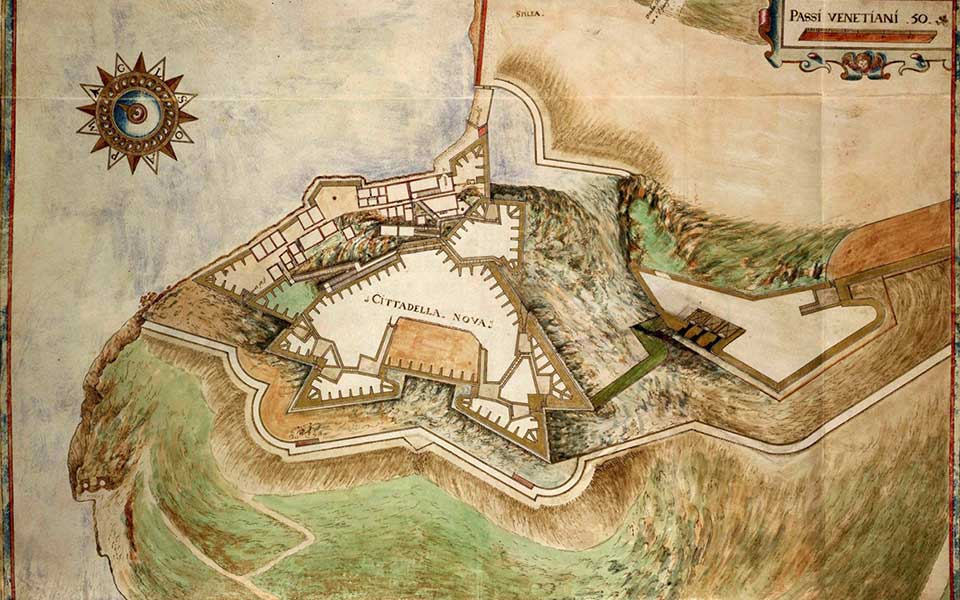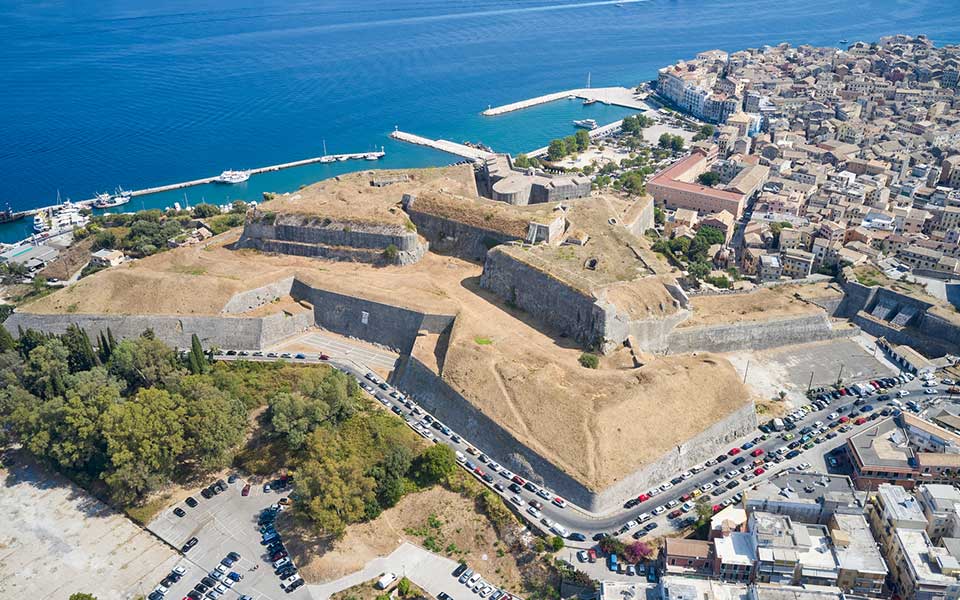The Greek Ministry of Culture and Sports has announced plans for the restoration of the Bastion of the “Seven Winds,” part of the famous pentagonal-shaped New Fortress on Corfu. Built by the Venetians in the late 16th century, the fortress is one of the island’s most iconic landmarks.
The project forms part of an extensive heritage management plan to restore and promote the monuments of Corfu’s historic Old Town, inscribed on UNESCO’s List of World Heritage Properties in 2007.
Following the positive response of the Central Archaeological Council (KAS) regarding the architectural, static and geotechnical studies for the project, Culture Minister Lina Mendoni said: “Corfu Town is one of the most important fortified cities in the Mediterranean and one of our country’s most prominent tourist destinations. The Fortresses are included in the monumental integrity of the Old Town and their overall promotion and utilization is a priority for the Ministry of Culture and Sports. The restoration of the Bastion of the ‘Seven Winds’ is part of the wider context of the protection and promotion works of the fortifications already in progress. Our strategic choice is for the two Fortresses to be treated as a whole in a coordinated and integrated way through the Management Plan prepared by the services of the Ministry of Culture in collaboration with the National Technical University of Athens, utilizing the financial tools of the new NSRF and the Recovery Fund.”

© Hellenic Ministry of Culture and Sports
The New Fortress was built in the aftermath of the first Ottoman Siege of Corfu in 1537, part of the massive project of walling the town against future attack.
Designed by the military engineer Ferrante Vitelli, the twin-bastioned fortress, bristling with artillery emplacements and standing 55 meters above sea level on the hill of St. Mark, is an outstanding example of Renaissance-era military architecture. It was further expanded with modifications and additions during the period of the British Protectorate (1814-1864).
The fortress sustained extensive damage in 1923 when the Italian Air Force bombed the site during the military and diplomatic crisis known as the Corfu Incident.
The present plan for the restoration of the Bastion of the “Seven Winds” (Epta Anemoi) includes documentation of its architectural pathology, a comprehensive damage assessment, and the formulation of works to restore the collapsed section of the southern wall.
With is interior maze of arched chambers, shafts, ramps, gunpowder magazines and underground cisterns, the colossal New Fortress remains one of the most important and best preserved fortress complexes in Greece, and is currently included on the Tentative List of Late Medieval Bastioned Fortifications in Greece for inscription on UNESCO’s World Heritage List, submitted in 2014.












